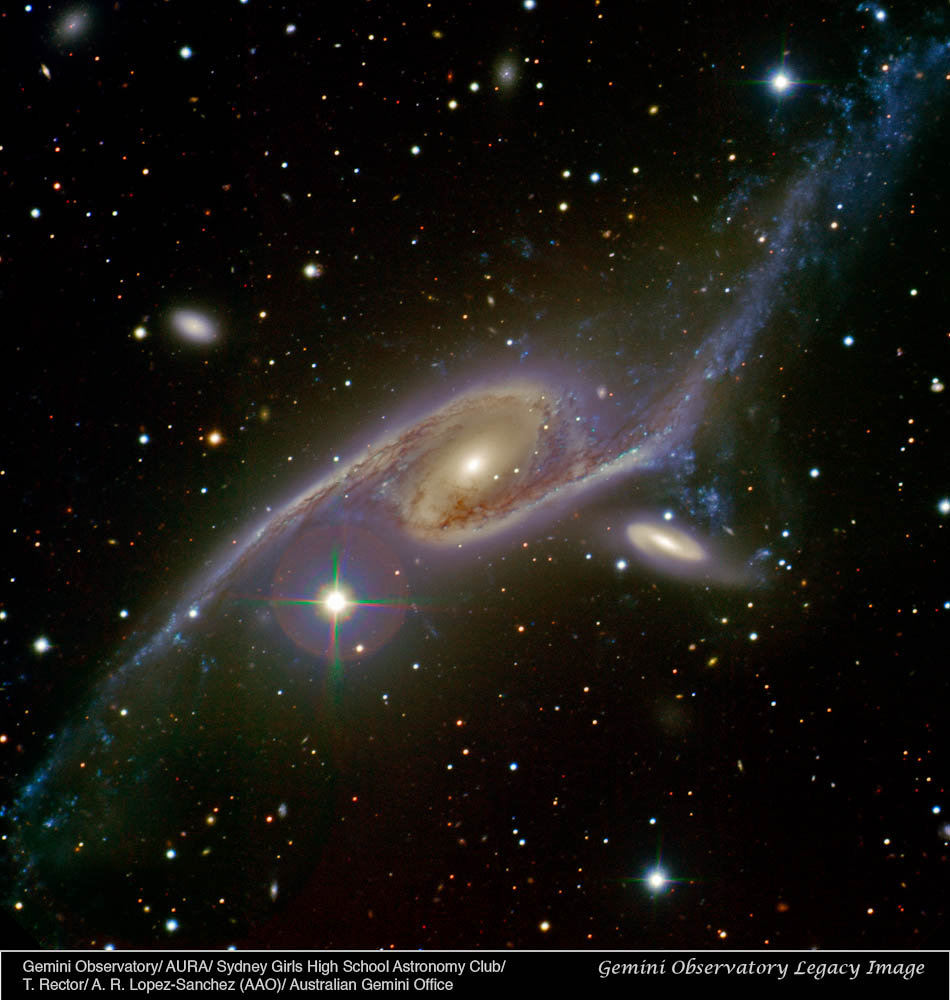
For the second consecutive year, high school students from across Australia joined in a competition to obtain scientifically useful (and aesthetically pleasing) images using the Gemini Observatory. The spectacular result of this contest, organized by the Australian Gemini Office (AusGO), is revealed here. As the 2010 winning student team suggested, Gemini targeted an interacting galaxy pair which, they assured, “would be more than just a pretty picture.”
The team, made up of students from the Sydney Girls High School (SGHS) Astronomy Club in central Sydney, proposed that Gemini investigate the galaxy pair NGC 6872 and IC 4970 (see Figure 1). The two galaxies are embraced in a graceful galactic dance that, as the team described in the essay to support their entry, “…will also serve to illustrate the situation faced by the Milky Way and the Andromeda galaxy in millions of years.”
The Gemini Multi-Object Spectrograph (GMOS), in its imaging mode on the Gemini South telescope in Chile, collected the photons for the stunning new image. At an event held at SGHS on March 22, 2011 (see Figure 2), the winning team and teachers viewed the image for the first time and filled the room with “oohs” and “aahs” when Christopher Onken (Australian National University/AusGO) unveiled it. Assisting Onken, Angel López-Sánchez (Australian Astronomical Observatory/Macquarie University) highlighted many features of the image and explained galaxy interactions using computer animations and simulations.
The primary galaxy in the image (NGC 6872) exemplifies what happens when galaxies interact and their original structure and form is distorted. When galaxies like these grapple with each other, gravity tugs at their structures, catapulting spiral arms out to enormous distances. In NGC 6872, the arms have been stretched out to span hundreds of thousands of light-years—many times further than the spiral arms of our own Milky Way galaxy. Over hundreds of millions of years, NGC 6872’s arms will fall back toward the central part of the galaxy, and the companion galaxy (IC 4970) will eventually be merged into NGC 6872. The coalescence of galaxies often leads to a burst of new star formation. Already, the blue light of recently created star clusters dot the outer reaches of NGC 6872’s elongated arms. Dark fingers of dust and gas along the arms soak up the visible light. That dust and gas is the raw material out of which future generations of stars could be born.
http://www.gemini.edu/node/11625